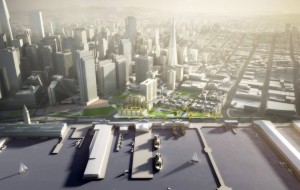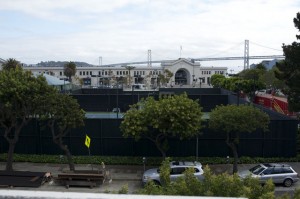The controversial 8 Washington Street condominium development that is now the subject of a fierce political campaign in San Francisco boils down to this question: What’s the best thing to do with the 3.2 acres of waterfront land now occupied by a parking lot and a private fitness club with tennis courts and a pool?
Supporters of Propositions B and C say the 8 Washington Street developers held more than a hundred public meetings and got public approvals from the Port and Planning Commissions and the Board of Supervisors. They emphasize the $11 million developers will pay into the City’s affordable housing fund along with public amenities like open space that’s not there now.

De-emphasized by the Yes on B side is the fact most cited by opponents: The project won an exemption from current height limits allowing some of the new condos to rise 136 feet (about 12 stories), twice the height of the old Embarcadero Freeway that was torn down in 1991 (in fairness the tallest parts of the development are set back a bit off the waterfront near Drumm Street).
The slogan for the No on B and C campaigns (opposing the condos) is “No Wall on the Waterfront.” Former Mayor Art Agnos, a leading opponent of 8 Washington, calls the development “the first brick” in a wall of development along the waterfront that will occur if this project moves forward. Agnos sees the No on Props B and C campaign as a battle to build more middle class housing (8 Washington will be luxury condos) and also to protect a fight he waged more than two decades ago – to tear down the double decked Embarcadero Freeway and open up the waterfront.
I remember that battle well. At the time, I was a 32-year-old press secretary working for Mayor Agnos. When the freeway was severely damaged by the 1989 Loma Prieta Earthquake, there were loud calls – led by Chinatown dynamo Rose Pak – to repair the freeway.
